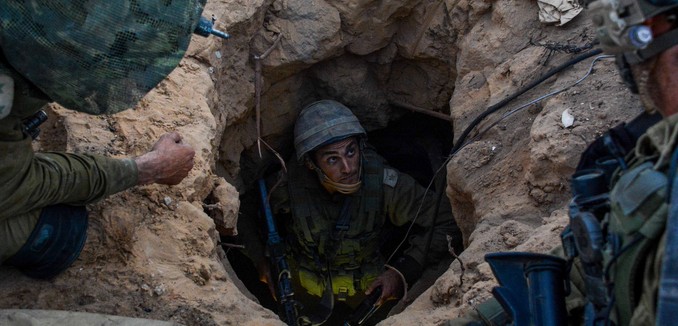In an analysis Wednesday, David Horovitz, editor in chief of The Times of Israel, wrote that the focus of the IDF has changed from destroying Hamas’ rockets to destroying Hamas’ tunnels.
Horovitz described how the IDF seeks out and destroys the tunnels, and risks inherent in those strategies.
But those are defensive measures. The real battle is taking place in those Gaza border neighborhoods — Shejaiya, Beit Lahiya, Beit Hanoun and others — where thousands of Israeli solders are searching, house to house, for the tunnel entrances. Dozens of openings have been found — multiple entrances to the underground passages that also have multiple exits on the Israeli side. Time after time, Hamas gunmen have sought to surprise the Israeli soldiers by rising out of the earth from these openings, and firing. They’ve been largely unsuccessful. Ten Hamas gunmen were shot dead attempting the feat from one tunnel opening inside a mosque on Sunday, military sources said — just one of numerous such incidents.
Israel says some 210 Hamas fighters have been killed; more than 20 have been captured and are providing intelligence on the tunnels.
But Israel is paying a heavy price. Soldiers have been killed in booby-trapped buildings. Six, maybe seven died when their armored personnel carrier was hit by an anti-tank missile in Shejaiya. They are fighting off kidnap attempts. They report being charged by Gaza children as young as 13 wearing suicide-bomber belts laden with explosives. The losses are mounting. “We’re in a war,” said Col. Uri Gordin, commander of the Nahal Brigade, on Tuesday.
Still the fear is that if not all the tunnels are found and destroyed, Hamas could use them to launch a “mega-attack” on southern Israel.
Jonathan Doha Halevi described the tunnels and the possibility of such an attack as changing the balance of power between Israel and Hamas.
The attack tunnels create a new equation in the power balance between Israel and Hamas. They give Hamas an ability to infiltrate Israel and carry out strategic attacks involving mass killing, along with an ability to launch missiles from locations concealed within civilian population centers that serve, in effect, as human shields. Should Hamas retain in the future 20 tunnels, and dispatch 50 operatives in each, they could deploy 1,000 men behind Israeli lines. The tunnels would allow Hamas to wreak havoc if they are left in place.
Because of this, Horovitz argued that only Israeli military action – no matter how costly – can effectively disarm Hamas and afford Israel the security it needs.
Israel needs Gaza demilitarized, and the UN, US, EU et al are no more capable of ensuring that than the international community was capable of disarming Hezbollah in south Lebanon.
[Photo: Israel Defense Forces / Flickr ]




